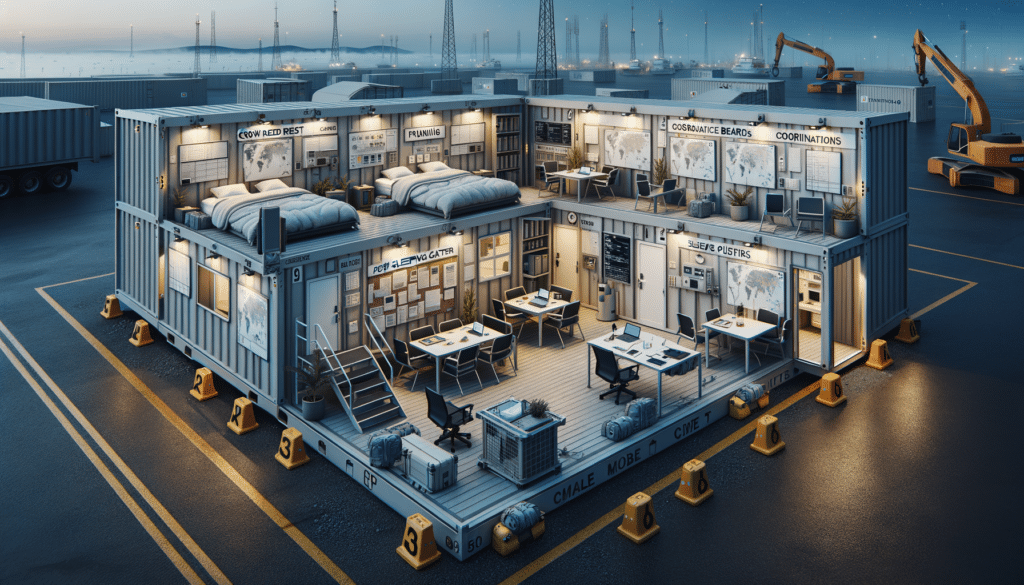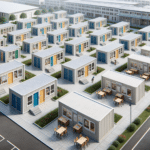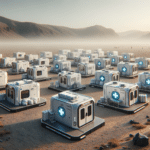The Role of Crew Sleeping Cabins in Remote Job Sites
In the dynamic landscape of remote job sites, crew sleeping cabins play an essential role in maintaining the efficiency and well-being of the workforce. These cabins are designed to provide a comfortable and secure environment for workers who are stationed far from urban amenities. The importance of crew sleeping cabins cannot be overstated, as they serve as a crucial component in ensuring that workers are well-rested and ready to tackle the demands of their tasks.
Crew sleeping cabins are often equipped with basic amenities such as beds, climate control, and sometimes even small kitchenettes. This ensures that the workforce has access to a personal space where they can unwind after a long day. The design of these cabins often takes into account the need for privacy and noise reduction, providing a sanctuary for workers to recharge. By offering a space that caters to the physical and mental well-being of employees, these cabins contribute significantly to the overall productivity and morale of the team.
Moreover, the strategic placement of crew sleeping cabins on job sites facilitates efficient logistics and coordination. By having workers stay close to the work area, travel time is minimized, allowing for more time to be dedicated to project tasks. This arrangement not only boosts productivity but also enhances safety, as workers are not required to travel long distances, often in challenging or hazardous conditions.
Innovative Solutions in Mobile Workforce Housing
Mobile workforce housing has evolved significantly over the years, offering innovative solutions that cater to the diverse needs of workers in various industries. These housing units are designed to be easily transportable, allowing companies to set up and dismantle accommodations quickly as projects move from one location to another. This flexibility is a key advantage in industries such as construction, mining, and oil and gas, where job sites are often located in remote or temporary locations.
The modern mobile workforce housing units are equipped with advanced features that enhance comfort and functionality. Some units include modular designs that can be customized to fit the specific needs of the workforce, such as additional sleeping quarters, office spaces, or recreational areas. The use of sustainable materials and energy-efficient systems is also becoming more prevalent, aligning with the growing emphasis on environmental responsibility in industrial operations.
Furthermore, mobile workforce housing provides a sense of community for workers who may be far from home. Common areas such as dining halls, gyms, and recreational spaces encourage social interaction and help build camaraderie among team members. This social aspect is crucial in maintaining a positive work environment and reducing the sense of isolation that can occur in remote job sites.
Jobsite Accommodation Units: Enhancing Efficiency and Safety
Jobsite accommodation units are an integral part of the infrastructure on remote job sites, offering a range of benefits that enhance both efficiency and safety. These units provide a centralized location for workers to rest, eat, and engage in daily activities, which streamlines operations and reduces downtime. By having essential facilities readily available, workers can focus more on their tasks without the distraction of logistical challenges.
The design of jobsite accommodation units often includes features that promote safety and security. For instance, these units are typically equipped with fire safety systems, secure locks, and emergency communication tools. This ensures that workers are protected from potential hazards and can respond quickly in the event of an emergency. The presence of medical facilities within these units further enhances safety, providing immediate access to healthcare services if needed.
Additionally, jobsite accommodation units can be tailored to meet the specific needs of different projects. This customization allows companies to optimize the use of space and resources, ensuring that workers have access to the amenities they require. Whether it’s additional storage for equipment or specialized facilities for certain tasks, these units can be adapted to support the unique demands of each job site.
Comparing Crew Sleeping Cabins and Mobile Workforce Housing
While crew sleeping cabins and mobile workforce housing share the common goal of providing accommodation for workers in remote locations, they differ in several key aspects. Understanding these differences can help companies choose the most suitable option for their specific needs.
Crew sleeping cabins are typically more permanent structures, designed to stay in one location for the duration of a project. They are often equipped with more comprehensive amenities and are built to withstand various environmental conditions. This makes them ideal for long-term projects where stability and comfort are paramount.
On the other hand, mobile workforce housing is designed for flexibility and mobility. These units can be easily transported and set up in different locations, making them well-suited for projects that require frequent relocation. The modular nature of mobile workforce housing allows for quick adjustments to the size and configuration of the accommodation, providing versatility that is invaluable in dynamic work environments.
Both options offer unique advantages, and the choice between them depends on factors such as project duration, location, and specific workforce needs. Companies must carefully evaluate these factors to ensure that they provide the most effective and efficient accommodation solution for their workers.
The Future of Jobsite Accommodation: Trends and Innovations
As industries continue to evolve, so too does the landscape of jobsite accommodation. Emerging trends and innovations are shaping the future of how companies provide housing for their remote workforce, with a focus on enhancing comfort, efficiency, and sustainability.
One of the most significant trends is the integration of smart technology into accommodation units. This includes features such as automated climate control, energy-efficient lighting, and advanced security systems. These technologies not only improve the living conditions for workers but also contribute to the overall sustainability of the project by reducing energy consumption and minimizing environmental impact.
Another trend is the increasing use of eco-friendly materials and construction methods. Companies are recognizing the importance of reducing their carbon footprint and are opting for sustainable solutions in their accommodation designs. This includes the use of recycled materials, solar panels, and water-saving fixtures, all of which align with the broader industry shift towards environmental responsibility.
In addition, there is a growing emphasis on creating a sense of community within jobsite accommodations. This involves designing spaces that encourage social interaction and collaboration among workers, fostering a positive work culture. Common areas, recreational facilities, and communal dining spaces are becoming standard features in modern accommodation units, reflecting the importance of social well-being in the workplace.
As these trends continue to develop, the future of jobsite accommodation promises to be more innovative, sustainable, and worker-centric, ensuring that the needs of the workforce are met in the most effective way possible.


